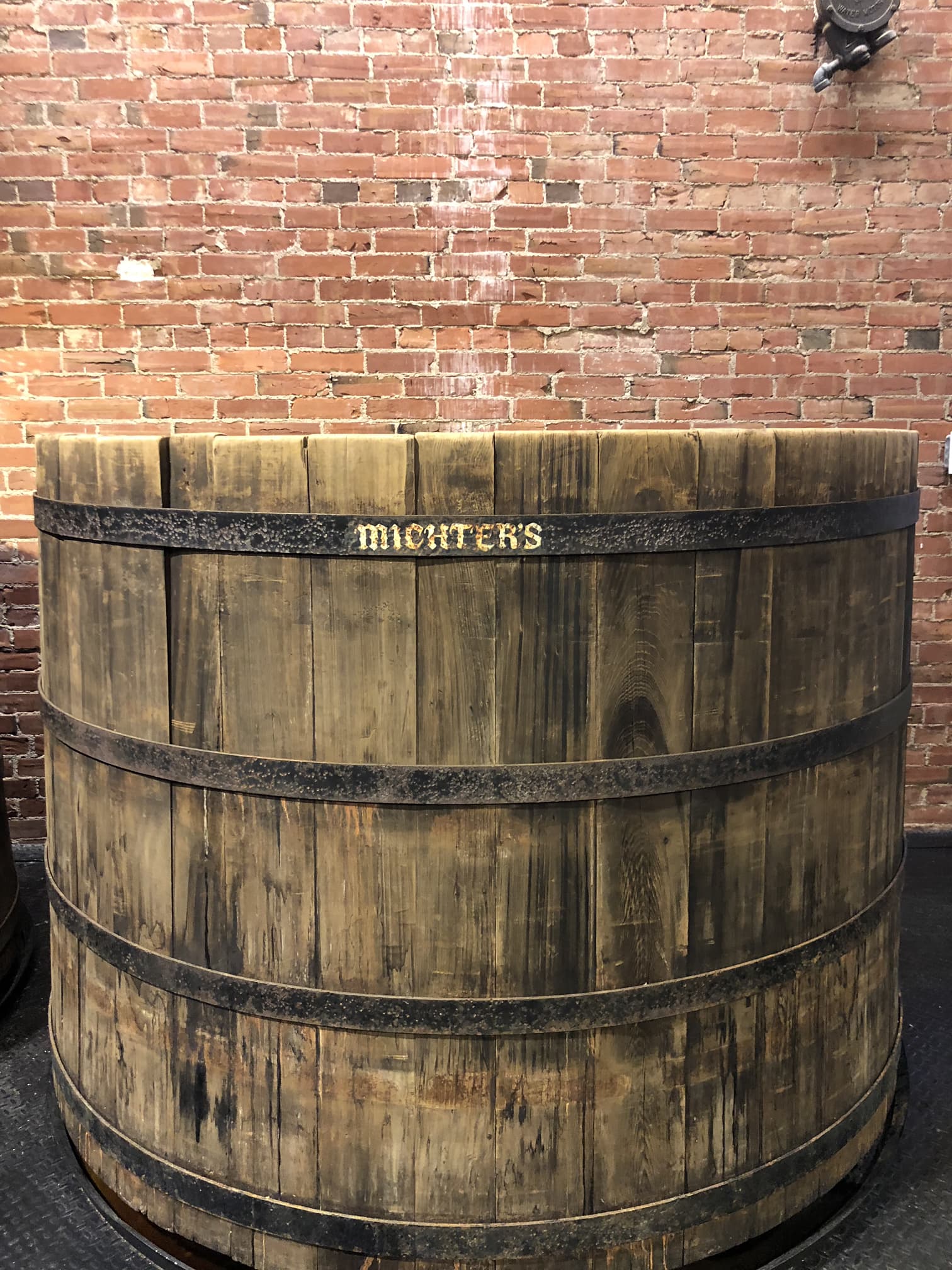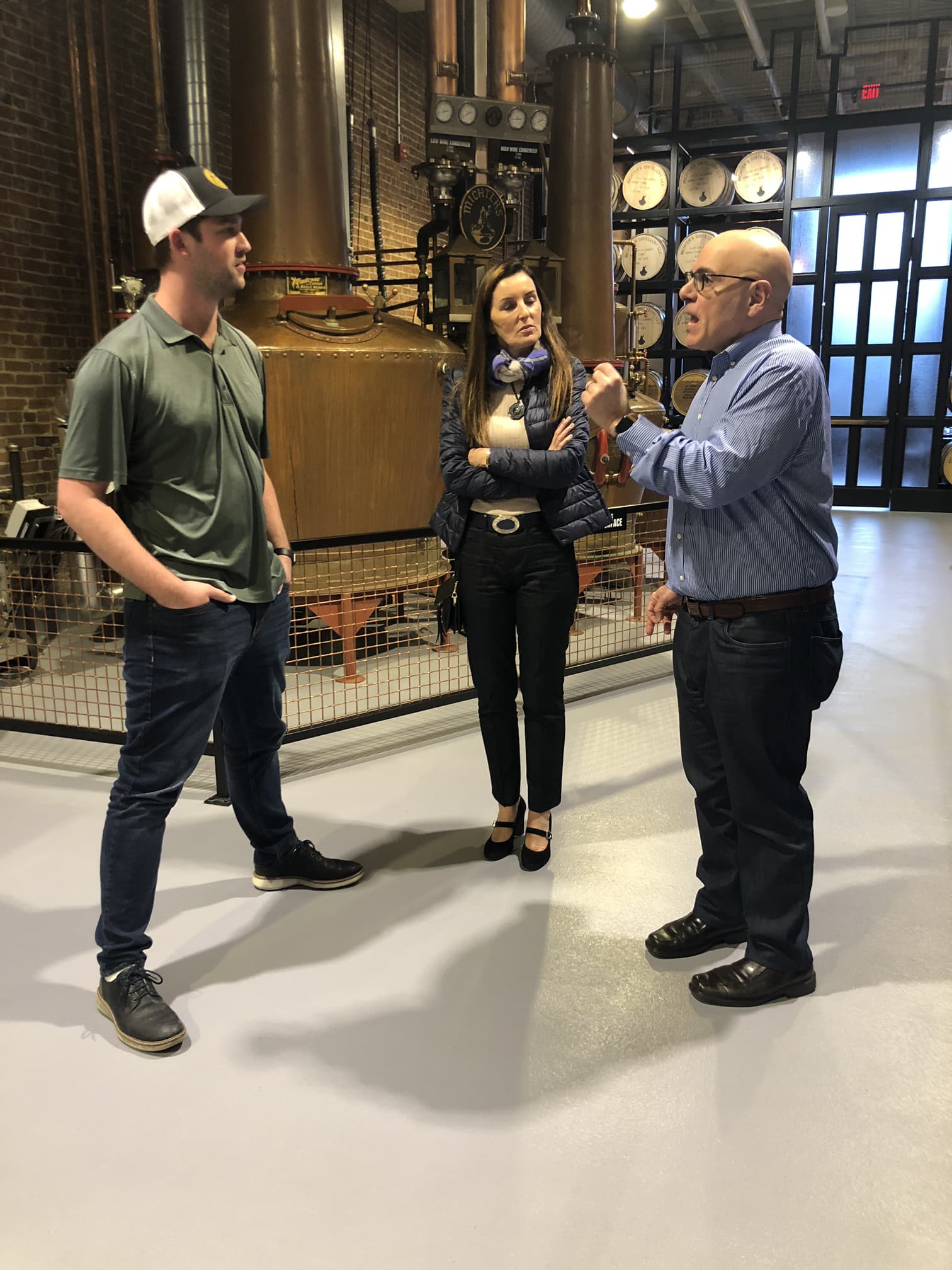Kentucky Round 3 - Mass Market Mea Culpa
After our insane day of tasting casks and exploring distilleries, we headed back to Louisville. On our way we popped by Jim Beam’s Claremont plant to say hello and grab some Old Tub – cause who can argue with this stuff. Weirdly for the first time in years, Beam failed to organize any barrel tasting while we were in town. That’s not to say we don’t have plenty of great Beam single cask on the way. They’re one of the easiest to do business with when it comes to single barrels. We’ve been through the distillery many times and even though we didn’t taste this time, we’re regularly getting excellent casks from the Knob Creek line.
Honestly, it seems like Beam might just have an infinite supply of old delicious bourbon that they’re willing to part with for a relatively reasonable price. Our last 5 Knob Creek Barrel picks have all been 13-14 Years old. They’re bottled at just a smidge under cask strength and hit the shelf for under $50. There’s been some buzz in the bourbon community about how special these casks really are, but they’ve by no means achieved the kind of status of Four Roses or Willett picks. Partly that’s because Beam doesn’t play the geek game quite as well as those two, but also because they’re just such a big fish.
They’re the largest owner of Bourbon on the planet. They’ve filled more than 15 million barrels and have millions of barrels in stock. They recently lost the status as the single largest Bourbon distillery title to Bernheim’s expansion in 2017. Beam won’t be outdone for long and have planned their own expansion at the massive Boston plant, which is the only serious distillery in Kentucky I’ve not visited.
Do they need all that bourbon? Probably, but as their sales shift from handles of white label to higher end offerings, they’ve refocused on the high end of the market. They’ve rebranded the entry-level stuff, trying to elevate to their offerings, and done a great job making their “Small Batch” collection popular with the masses. But they still struggle with with some of the geeky fanbase – whose knee jerk reaction is skepticism -unless of course it’s Booker’s.
Ultimately, Beam is producing extremely high-quality bourbon and selling it at an incredibly reasonable price. That said the key to winning the hearts and minds is the success of their single barrel program. Part of the problem with the program previously was the use of the standard label without the requisite information that a real nerd requires. The only distinguishing factor between the regular release and their single barrel was a plaque with the Barrel Lot # etched into it.
That’s about as little information anyone could ever provide on the bottle, considering the Lot # tells us absolutely nothing about the whiskey. Not to mention the 9 Year aged statement was about 4-5 years less than what was going into the bottle. But they’re marketing team heard our cries and reworked the single barrel labels. They now include the fill and dump dates, warehouse, floor and rick information.
It’s an incredible turn around for what was once one of the most frustratingly opaque offerings on the market. That said one crucial point of information was left off the labels - the barrel number. I’m not sure if it’s an oversite or someone figured that we already had enough information, but it smacks of a decision made by a team who doesn’t understand its customers. That’s sort of thing plagues the bourbon industry even today. Marketing decisions that are created by non-bourbon drinkers, focused grouped with non-bourbon lovers, and then marketed to us like they know what we want.
I’m not hating on Beam here in particular; this is an industry wide problem. Do you think Jimmy Russell invented the WT flavored products? No. Was Campari surprised when no one wanted them? Certainly. Of course, my perspective is from the most niche part of an industry whose main clientele is not really concerned with most of this stuff and still sells tons of low-end flavored crap. But a rising tide lifts all boats and if they capture the attention and affection of serious drinking class that I represent, there’s no question that a trickle down to the mass market will occur.
We’re in a new era of zero brand loyalty, infinite options, and unprecedented information. Every drinker, even those who can’t afford to, want to drink the best. They google “best bourbon” on their phone when they walk into a store. That’s why so many people ask for Pappy. Not because they have any real understanding of that brand and its significance, but because it pops up first on every list. The information is at anyone’s disposal. A couple of key strokes they find out Pappy is actually weller. If they can’t have Weller than they’ll ask for Blanton’s or Buffalo Trace, etc.
Why Jim Beam has avoiding offering limited editions with large age statements in a Pappy style bottle, from a marketing stand point, is beyond me. It’s not for lack of availability of older stocks. But, the bourbon drinker inside me prays this scenario never plays out and we continue to get delicious old whiskey for a fraction of what they’re really worth.
We were about an hour late to our Beam appointment, but still got some swag from the shop and a walk around the property. The massive distillery has become the quintessential stop on the bourbon trail, but that night we’d be meeting the complete opposite end of the bourbon spectrum. We headed to the tiny Fort Nelson distillery recently opened by Michter’s. This is a company that understands the high-end of this market.
They’ve worked extremely hard to make sure that the Michter’s brand is synonymous with quality. Sure, they’ve had their detractors over the years. But, if you sit down across from Joe Magliocco, you instantly see the genuine passion he has for making the very best bourbon in Kentucky. Yes, you can bitch about them not divulging their sources -the result of their contractual obligations. You can complain about how they’re former Master Distiller Willie Prate and Michter’s won Distiller of the Year before they owned an actual distillery. But if you look more closely at what they were doing you’d realize it was well deserved.
Michter’s history is broken up into three phases. The sourcing phase, where like many other high-end producers in the 1990s, they took advantage of a plethora of old bourbon sitting on the market, by buying and bottling whiskey from several different distilleries. They still have some of that original old whiskey stashed away in their warehouse, usually dumped into steel drums to prevent further aging.
Phase two was the contract phase. This is where Joe and his two mentors, Dick Newman and Willie Pratt, really began to distinguish themselves from their competitors and the reason why in my opinion they deserve their award for Distillery of the Year in 2012, years before their own distillery was operating. Joe adopted a philosophy of using every technique possible to create the very best bourbon, regardless of the cost inefficiencies or complications.
The result were decisions made in the distillery and warehouses that many of their competitors had done away with decades earlier. Using extra-seasoned wood was the first step. The seasoning out doors was well beyond industry standards and the resulting barrels offered softer more supple tannins to the bourbon. Next, they added a toasting step before charring which allows the bourbon to impregnate the barrel deeper than a standard charred barrel.
Finally, they fill barrels at a much lower temperature than their competitors, 103 proof. Water and ethanol interact with wood in different ways and elements that are soluble in water are not necessarily so in spirit. The resulting bourbon is smoother, rounder and richer than a barrel filled at higher proof and less water needs to be added before bottling to get them to proof. This commitment to quality at any cost continues today at their Shively Distillery and this tiny Fort Nelson Plant. They’ve acquired these two pot stills from the original Michter’s distillery in Schaefferstown, PA. These are the very same stills that our friend Tom Herbruck distilled the excellent Tom’s Foolery whiskies with.
Joe Magliocco loves to do it up. In the distillery and in life in general. After walking through the small distillery and getting the history, he took us up to Michter’s Bar. There they’ve got some world class mixologist working behind the bar. Michter’s Bar Manager Dante Wheat served up one of the most exciting cocktails I’ve had all year, a gorgeous complex Clarified Milk Punch. The drink alone is worth the trip to Fort Nelson. But, Joe proceeds to order us shots of every high-end Michter’s in the bar. 10 Year Bourbon, Cask Strength Rye, Michter’s 20 Year, Celebration. This was just the beginning of what would turn out to be one of the best drinking nights our Kentucky Trip history. Krug Rose, Puligny, Leoville Barton, all ended up on the table at one point.
Joe is clearly doing all this because he loves it. He doesn’t need more money. He could have kept the brand as a NDP and done fine for his family for decades to come, but he truly believes in what he’s doing. He wants the best in his glass just the same way he wants the best in his barrels. There’s no question that over the next 10 years, Michter’s and their incredible team will be some of the most important players in the high-end bourbon market. The quality commitment already exists in even their most entry level products. This is exactly why we’re so proud to stock the excellent Michter’s Whiskies and pray that the industry takes note of the incredible competition this little family owned brand represents.









